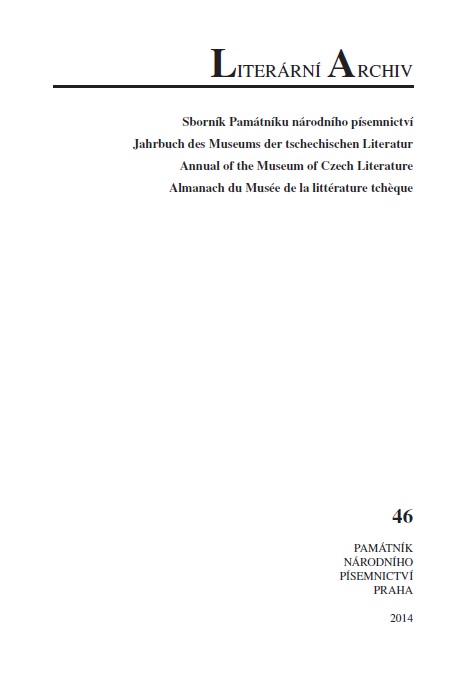„Zde máte arch papíru, tužku a nakreslete mně cokoliv...“
Here’s a Sheet of Paper, a Pencil. Draw Anything You Like for Me
Václav Brožík and His Search for a Patron
Author(s): Yvetta DörflováSubject(s): Studies of Literature
Published by: Památník národního písemnictví
Keywords: Václav Brožík; Růžena Fričová née Švagrovská; Roudnice nad Labem; Antal Stašek; memoirs; patron; Jan Emil Lauffer; August Švagrovský
Summary/Abstract: An unknown drawing by Václav Brožík (1851–1901) was discovered while cataloguing the papers of Růžena Fričová née Švagrovská (1851–1935) and her husband Vojtěch Frič (1844–1918). The discovery was the impulse for this edition and is also an atypical but integral part of it. The published documents should not only provide an answer to the question of how and when the drawing was made, but also open the story of the support for artists in the broader contexts of family life in the newly emerging stratum of entrepreneurs. The edition comprises four different sources covering a period of almost sixty years. All four records are documents of a personal nature. In the first part of the edition, comprising letters from Brožík addressed to Švagrovská Fričová, the personality of the letter-writer and the man who made the drawing comes to the fore. His letters constitute an immediate statement on the everyday life of a young artist. By means of the other three sources, from the 1930s, the reader is given a glimpse into a tangle of interpersonal relations. The second document, the manuscript memoirs of Švagrovská Fričová, concerning her contacts with Brožík, provides testimony – in a literary form – by the novelist Antal Stašek (real name Antonín Zeman, 1843–1931), published at the end of the edition. The creation of the literary form of the memoirs is described in the third part of the edition, with the publishing of the correspondence between Stašek and Fričová. This edition represents a modest contribution to our knowledge of Brožík’s life and early work. It provides a view of the early patronage provided by the emerging Czech bourgeoisie, with the aim of demonstrating, using primary sources, not only the circumstances of patronage, but also its reception in the broad context of the social and cultural climate of the nineteenth century. The sources, published in four parts, also graphically document problems of memoir material, caused not only by its subjectivity, but also by the unreliability of memories, which can be or, rather, become distorted over time. In this case, we have an exceptional opportunity to read several texts concerning the same period and events, but written over a longer period.
Journal: Literární archiv
- Issue Year: 2014
- Issue No: 46
- Page Range: 289-321
- Page Count: 33
- Language: Czech

